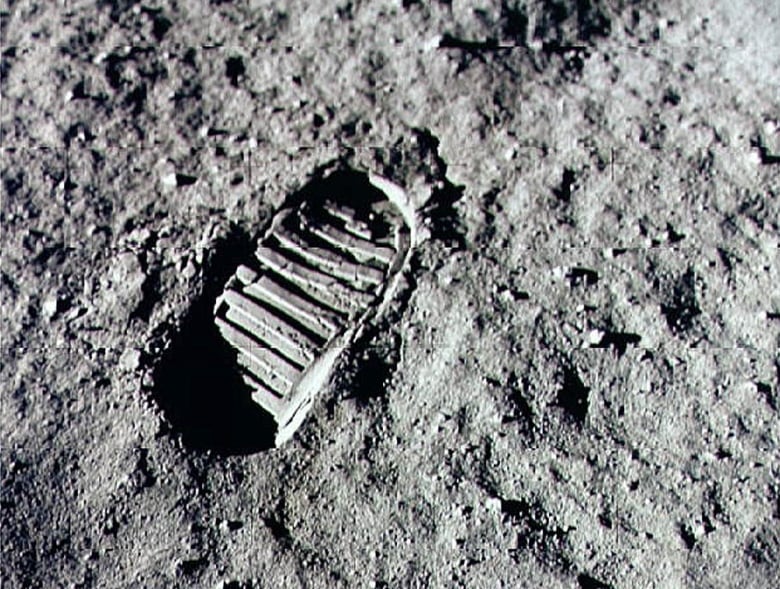The U.S. has passed a law meant to preserve the Apollo moon landing sites from disruption by any nations or private companies working with NASA on the lunar surface. This could eventually include future space tourists who may notice that the American flags erected by astronauts may not be standing any longer.
There were six Apollo landing sites established between 1969 and 1972. The One Small Step to Protect Human Heritage in Space Act, which came into effect on New Year's Eve, declares sites off-limits so they may be preserved for posterity.
Among other things, this could help protect the sites from the ravages of souvenir hunters. Imagine a future when you could visit the Sea of Tranquility and see the actual spot where Neil Armstrong and Buzz Aldrin became the first humans to walk on another world in July 1969.
You would be tempted to walk up to the four legged descent stage still there exactly as they left it when they blasted off for home, or touch the very ladder that the astronauts climbed down, or stand on the footpad and look down on Armstrong's famous first small step boot print in the lunar soil. Maybe there is even a piece of gold coated insulating foil you could nip off…

Of course, the very act of touching the artifacts would be desecrating the site, just as so many historic sites on Earth have been degraded by tourists and vandals.
The new act is meant to prevent that from happening to what are among the most significant historic sites of the modern era. The sites have even been made no-fly zones to prevent rocket exhaust from future landing craft from disturbing the artifacts.
Each landing site contains a number of items that were left behind by the astronauts, including the lower descent stage of the lunar module, scientific equipment like laser reflectors and seismometers, along with television cameras and lunar rovers. With no wind, rain or floods on the moon to cause weathering, many of the artifacts will remain intact in the vacuum for thousands of years or longer, barring unlucky meteorite impacts.
Except the flags.

When Armstrong and Aldrin of Apollo 11 made their historic landing, one of their first tasks was to raise the American flag. After all, the drive behind the moon missions was to prove America's technical superiority of the Soviet Union, so the flag raising was hugely symbolic.
But Buzz Aldrin later reported that the last thing he saw as they blasted off from the moon was the flag being blown over by the rocket exhaust. Later images of the landing sites taken by satellite show flags still standing on most of the sites, but not Apollo 11.

This could present a conundrum to the preservationists. If the flag is indeed laying on the ground, should someone in the future go there, stand it up again and restore the image of American pride? If they do, they will disturb those historic first footprints made more than half a century ago.
To cover that eventuality, there is a waiver clause in the new act that says the sites can be approached for "activities of legitimate and significant historical, archeological, anthropological, scientific, or engineering value."
That might, for example, allow engineers to investigate how the materials of the artifacts have been affected over time to help design better materials for future spacecraft. But you might imagine that anyone who does visit the historic Apollo 11 landing site will be tempted to stand the flag back up again.

But if the flag is raised again on the moon, there may not be much of it left. All the flags sent to the moon were not specially made for that purpose. They were regular government issue flags made of nylon material that would easily be faded and degraded by the powerful unfiltered ultraviolet radiation from the sun that has been shining on them for more than fifty years.
Even on Earth flags begin to lose colour after a year or two because of solar radiation. Experts suggest all of the flags that were raised on the moon are likely completely bleached out by now. Half a century of long lunar days and super cold lunar nights has probably made the flags unrecognizable.
Putting the stars and stripes back on the moon may seem like a trivial affair, but the symbolism of flags has always been important, and doubtless there will be those who want to do it. However, designing a flag that can resist the harsh lunar environment will be a technological challenge of its own. It would have to be made of colour fast, UV protected material that will stand the test of time. And on the moon, that is a very, very long time.
https://news.google.com/__i/rss/rd/articles/CBMiG2h0dHA6Ly93d3cuY2JjLmNhLzEuNTg2NjAzMdIBIGh0dHBzOi8vd3d3LmNiYy5jYS9hbXAvMS41ODY2MDMx?oc=5
2021-01-08 20:02:00Z
CBMiG2h0dHA6Ly93d3cuY2JjLmNhLzEuNTg2NjAzMdIBIGh0dHBzOi8vd3d3LmNiYy5jYS9hbXAvMS41ODY2MDMx
Tidak ada komentar:
Posting Komentar